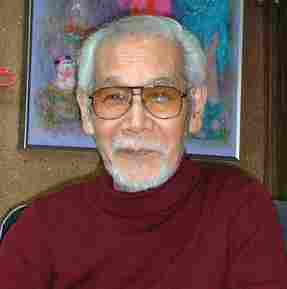Jonathan Clements's Blog, page 9
August 15, 2012
Black Mannerheim
[image error]God bless YLE, Finland’s public service broadcaster, for its ever-innovative ways of spending the TV licence fee. A malicious puppet show about national icon Carl Gustaf Mannerheim was apparently not enough. Now YLE is shelling out for an arty Swahili film about Mannerheim’s love life, in which all the parts are played by Africans.
The Finnish right wing is having conniptions. I’m rather looking forward to it. How much of Mannerheim’s incredible life and bizarre adventures would translate to Kenyan locations? How might a black actor capture the character and hauteur of one of the whitest men in history? As far as post-modern drama goes, this is surely a world-class bonkers idea. It might even work. And if it doesn’t, it’s going to be the biggest car crash in the history of television.
Someone had a meeting about this. A group of earnest Finns sat around an Ikea table and picked at biscuits from a MariMekko tray, while a crazy-haired producer said: “Also, there’s a bunch of Kenyans who want to shoot a movie in five days about Mannerheim’s life story. In Swahili. Sounds great, right?” Nor is this likely to have been some manifestation of the deluded hyper-inclusionism of the BBC, which recently decided The Hollow Crown needed to have a black Duke of York. No. Someone at YLE thought this would be a really great idea, and they will either be running the channel soon, or looking for a new job.
The Finns are so animated about Mannerheim that nothing really surprises me any more. When I wrote my book about him, concentrating on his relationship with China and Japan, the Finnish translation was actually published a week ahead of the British “original”. Mrs Clements and I often play Mannerheim Bingo in Finnish bookshops, trying to guess what odd spin on his life will be the next to get published. There has been a comic about his tiger hunting days. There has been a (rather good) Mannerheim cookbook. And the aforementioned puppet show, which claimed he had a Kirghiz catamite, and showed him partying with the Grim Reaper during the battle of Tampere. But that’s a problem with being a national icon; you need to be robust.
I will definitely be tuning in for Black Mannerheim, but that’s because I am a Mannerheim fanboy, on the record as saying that he is one of the greatest figures of the 20th century. But one can’t help but wonder what the real agenda is behind this. Is someone at YLE making a post-modern point about icons and heroes, or is this that other recurring element of Mannerheim’s legacy — the substantial number of Finns whose ancestors were defeated Reds, and who can’t resist the chance to carnivalise his memory in ever odder combinations. If so, Mannerheim is sure to survive this latest assault on his dignity. Mannerheim’s enemies had a field day with the animated Butterfly of the Urals, because its vague and unsupported insinuation about his sexuality became a swift-travelling meme among young idiots who never saw the programme, but liked being able to repeat the new “rumour”. But there is no such message here — instead, its artistic heritage is far more likerely to be a restatement of a truth that many Finns already acknowledge, that Mannerheim’s story is so amazing, and so eternal, that even actors in distant Kenya are inspired by it.
Jonathan Clements is the author of Mannerheim: President, Soldier, Spy.
August 9, 2012
Global Pikachu
 My review of Duke University Press’s Pikachu’s Global Adventure is up now on the Manga UK blog.
My review of Duke University Press’s Pikachu’s Global Adventure is up now on the Manga UK blog.
August 3, 2012
Akira Daikuhara 1917-2012
 For those that didn’t see it, my obituary of the animator Akira Daikuhara went up online at the Manga UK blog the day after the Japanese animators’ union announced his death. I’d been interested in him for a while, mainly because he was as “old as anime itself”, but also because I realised that he had been edged out of many histories because nobody knew how to pronounce his name. Honestly, I am still not sure myself.
For those that didn’t see it, my obituary of the animator Akira Daikuhara went up online at the Manga UK blog the day after the Japanese animators’ union announced his death. I’d been interested in him for a while, mainly because he was as “old as anime itself”, but also because I realised that he had been edged out of many histories because nobody knew how to pronounce his name. Honestly, I am still not sure myself.
July 31, 2012
Podcast #5
Comic Con chats and ninja nonsense, in the Manga UK podcast
 The Manga UK podcast is back for its fifth outing, in which Jerome Mazandarani demonstrates his mastery of languages by speaking Australian, Jonathan Clements promises not to talk about ninja but then does anyway, Andrew Hewson offers a new and original interpretation of the voice of Bane, and Jeremy Graves silently weeps.
The Manga UK podcast is back for its fifth outing, in which Jerome Mazandarani demonstrates his mastery of languages by speaking Australian, Jonathan Clements promises not to talk about ninja but then does anyway, Andrew Hewson offers a new and original interpretation of the voice of Bane, and Jeremy Graves silently weeps.
00:00:00-00:40:00 : Discussion on San Diego Comic Con, Japan Expo, MCM Manchester Expo, new acquisitions by Manga UK and more. Jonathan reveals that his Animefest speech is now available to view online.
00:40:00-00:55:45 : The upcoming Ninja Scroll Steelbook release, and history (or lack of it) of ninja. An unexpected digression into English chroniclers of the Dark Ages, while discussing men in black chucking knives at each other.
00:55:45-1:04:15 : Discussion on the Fullmetal Achemist Sacred Star Of Milos premiere in London. Hotel woes, and grateful acknowledgement of the little clicky box on a Radisson booking page, which allows to avoid the embarrassment of making your guests pay for their own room.
1:04:15- 1:50:04 [end] : Ask Manga UK featuring questions on licensing, how Dragonball Z Season One has done since its release, life changing anime, old 90’s videodubs, Madoka Magica and much more.
Available to download now, or find it and an archive of previous shows at the iTunes page.
July 29, 2012
60 Minutes of Ranting

The Czechs have uploaded my keynote speech “Wrong About Anime” from Animefest 2012 in Brno, which they have impressively shot on two cameras and then subtitled in both English and Czech (press CC).
July 24, 2012
July 18, 2012
The Shadow Staff
In the new issue of Animation: An Interdisciplinary Journal:
 Despite the attention paid by Japanese animation historians to cartoon propaganda films made during the Second World War, twice as much animation may have been produced in the period for military instructional films. These films, now lost, were made by a group of animators seconded to the Tōhō Aviation Education Materials Production Office (Tōhō Kōkū Kyōiku Shiryō Seisaku-sho). Occasionally running for five or six reels (c. 48 minutes), and in one case consisting of a feature-length eight reels, they form the missing link between the one- and two-reel shorts of the 1930s and Japanese animation’s first feature, Momotarō Umi no Shinpei (1945, Momotarō’s Divine Sea Warriors). The films included tactical tips for the pilots who would bomb Pearl Harbor, short courses in identifying enemy ships, and an introduction to combat protocols for aircraft carrier personnel. This article reconstructs the content and achievement of the Shadow Staff from available materials, and considers its exclusion from (and restoration to) narratives of the Japanese animation industry.
Despite the attention paid by Japanese animation historians to cartoon propaganda films made during the Second World War, twice as much animation may have been produced in the period for military instructional films. These films, now lost, were made by a group of animators seconded to the Tōhō Aviation Education Materials Production Office (Tōhō Kōkū Kyōiku Shiryō Seisaku-sho). Occasionally running for five or six reels (c. 48 minutes), and in one case consisting of a feature-length eight reels, they form the missing link between the one- and two-reel shorts of the 1930s and Japanese animation’s first feature, Momotarō Umi no Shinpei (1945, Momotarō’s Divine Sea Warriors). The films included tactical tips for the pilots who would bomb Pearl Harbor, short courses in identifying enemy ships, and an introduction to combat protocols for aircraft carrier personnel. This article reconstructs the content and achievement of the Shadow Staff from available materials, and considers its exclusion from (and restoration to) narratives of the Japanese animation industry.
July 11, 2012
Booth Usher
 “Hello, tech support.”
“Hello, tech support.”
“Hello, this is the Ibaraki Film House here. We’re having trouble getting the film to play.”
“Have you tried turning it off and on again?”
“It’s not a digital film. It’s a film film.”
“Oh, right. Don’t you have a projectionist there?”
“What’s a projectionist?”
“A projectionist is the person who receives the cans of film, counts them, splices them if necessary, loads them on the plate, unspools back into 2000 foot reels…”
“What’s a reel?”
“…replaces the bulbs if they go out. Checks for dust.”
“How do you get dust on a film?”
“Well, in the case of Macross Plus, someone actually used one of the canisters as an ash tray for a few weeks. That didn’t help. So have you got a projectionist?”
“You must mean Ken the Booth Usher?”
“What’s a Booth Usher.”
“Well, he’s the guy who makes the film start, you know.”
“Aha! So he must be your projectionist.”
“Well, he serves popcorn and hotdogs… and then when it’s time for the film to start he…”
“Goes into the back room and presses Play?”
“Er… Yes.”
“Okay, I think I see the problem. You see, you have what’s called a state-of-the-art cinema.”
“Yes we blimmin’ do.”
“And the trouble is, that a state-of-the-art cinema, in the eyes of many corporations, is simply a giant DVD player with a hotdog seller outside.”
“You say that like it’s a bad thing.”
“Well, it is if you are having a… are you having a film festival?”
“Yes, we are!”
“So you’re showing some old movies?”
“Some of them date back to the late nineties!”
“The 1890s?”
“No! The 1990s!”
“And let me guess, they’ve arrived in big round cans full of black plasticky stuff in long strips.”
“Yes! So can you tell us what we need to do. We can play DVD, Blu-ray, Digibeta, HDCAM, full-on digital…”
“Do you have a pen and paper? Okay, good. Write this down: ‘Invent time machine. Go back ten years. Remember to keep training projectionists.’”
Jonathan Clements is the author of Schoolgirl Milky Crisis: Adventures in the Anime and Manga Trade. This article first appeared in NEO #99, 2012.
June 30, 2012
“Master Sun says…”
 In approaching a text in Classical Chinese, we must consider the immense differences between books and reading in our time and in that of the Art of War. There was, in ancient China, no such thing as our “book”. Classical Chinese was usually carved onto bamboo strips bound together with leather or string. Their physical appearance was closer to that of a modern rolling window blind than a “book”. One of the problems faced by modern archaeologists is the reconstruction of books from scattered fragments of bamboo – when the leather straps or connecting string decays, ancient Chinese books collapse into hundreds of scattered strips of unpaginated bamboo.
In approaching a text in Classical Chinese, we must consider the immense differences between books and reading in our time and in that of the Art of War. There was, in ancient China, no such thing as our “book”. Classical Chinese was usually carved onto bamboo strips bound together with leather or string. Their physical appearance was closer to that of a modern rolling window blind than a “book”. One of the problems faced by modern archaeologists is the reconstruction of books from scattered fragments of bamboo – when the leather straps or connecting string decays, ancient Chinese books collapse into hundreds of scattered strips of unpaginated bamboo.
Many translators have overlooked the performance required from Classical Chinese texts. Classical Chinese is a literary language that often summarises the vernacular rather than directly quoting it. The meaning of Classical Chinese has to be unpacked and interpreted. We might consider the written Art of War less as Sun Tzu’s “book” than as his notes for a speech or for further discussion.
The first words of the text, repeated at the head of each chapter, are “Master Sun says.” Everything that follows is implied speech, delivered to an implied listener: a local king perhaps, or a group of officer cadets. This is surely the origin of many of the text’s apparent repetitions: not the meanderings of a forgetful author, but moments of call and response by a commanding orator. “This is how war is waged,” says Sun Tzu at various points, an antiphon to wake up the students at the back, just as he makes an important point. The reader is encouraged to read it out loud; it is often a text better heard than read.
While handmade copies certainly might circulate of the better known texts, the best way for a ruler to “read” Sun Tzu was to have Sun Tzu’s words spoken, in person, by Sun Tzu himself. It is such interactive performances, in which a monarch might question a philosopher during and after a reading of the philosopher’s work, that have generated the many conversations and interrogations that can often be found interpolating classical Chinese texts. There is the original, and then there are the conversations and responses inspired by the original, and then sometimes there is the revised manuscript incorporating such conversations, followed in later centuries by the annotations of others. In such a way, ancient Chinese books often bear a closer resemblance to academic working papers, and are less “published” than they are placed on a continuum of revisions and facsimiles.
From The Art of War: A New Translation by Jonathan Clements. Out now in the UK and the US.
June 24, 2012
Our New Frontier is a Nice Place
“Xinjiang Hao” is one of my favourite songs. It’s a propaganda ditty from the Mao era, which charmingly recites all the reasons that China’s “new” frontier is a wonderful place. There are run-downs of natural resources, and lists of local fruit and veg. There’s a chorus that always brings a tear to my eye: “Our beautiful fields and gardens, our beloved Home”, and an oddly plaintive, clingy refrain that seems to be actually begging the listener to visit. Here is a rather eurotastic version, featuring some sultry bimbling and a prancing idiot who appears to be trying to play his own leg as a musical instrument.
This is, largely, how Xinjiang looks whenever it’s mentioned on Chinese telly – joyful dances and graceful dark-haired beauties. Back in the time of Empress Wu, her adviser Judge Dee suggested that she steer clear of Asia’s arid heart, thereby leaving it to her enemies to waste their energies crossing its forbidding deserts before they reached her borders. But Wu, and subsequent Chinese rulers, expanded the realm far to the west along the Silk Road, exposing China’s flank to a long, modern, festering border with all those Central Asian republics we tend to lump together as “The Stans”.
The Tree That Bleeds: A Uighur Town on the Edge is a fast read. Despite its 350 pages, some of the chapters are only a paragraph long, although author Nick Holdstock has artfully imposed a seasonal and narrative structure over what clearly began as scattered diary entries from his time in the remote town of Yining. The result is a welcome addition to the English-speaking world’s small supply of books about Xinjiang, China’s landlocked new frontier and place of exile.
 Holdstock’s book is unlikely to lead to a flood of tourist trips. Like Mannerheim before him (who was underwhelmed with the place), and Eric Tamm in Mannerheim’s footsteps, he describes a drab, dusty dump you’d have to be mad to visit, with nosy, snotty children, world-weary cab-drivers, and wheeler-dealers selling condemned blackcurrant juice. As for Things to Do, there’s always the cockfights, clamorous karaoke bars and pink-lit brothels. “Anyone wishing to launch a cultural pogrom in Yining,” Holdstock observes, “would be hampered by the shortage of targets.” There are none of Youtube’s pretty Uighur dancers here, nor much in the way of homespun shepherd wisdom. Instead, Holdstock finds squalid slums of crumbling concrete, apples that almost break his teeth, and a drunken, drugged-out population of no-hopers and spivs.
Holdstock’s book is unlikely to lead to a flood of tourist trips. Like Mannerheim before him (who was underwhelmed with the place), and Eric Tamm in Mannerheim’s footsteps, he describes a drab, dusty dump you’d have to be mad to visit, with nosy, snotty children, world-weary cab-drivers, and wheeler-dealers selling condemned blackcurrant juice. As for Things to Do, there’s always the cockfights, clamorous karaoke bars and pink-lit brothels. “Anyone wishing to launch a cultural pogrom in Yining,” Holdstock observes, “would be hampered by the shortage of targets.” There are none of Youtube’s pretty Uighur dancers here, nor much in the way of homespun shepherd wisdom. Instead, Holdstock finds squalid slums of crumbling concrete, apples that almost break his teeth, and a drunken, drugged-out population of no-hopers and spivs.
Arguably, one finds what one is looking for. Holdstock’s book is boldly formalist, discussing only what he sees and stumbles across. He doesn’t go out of his way to find natural beauty or local colour; instead he lets Xinjiang dig its own hole. Apologists and propagandists for Xinjiang describe lush green hills populated by gambolling sheep, glittering mosques, happily dancing natives (a recurring stereotype that clearly winds the locals up), and quaint folk traditions. But many foreign observers (well, so far in my reading, all of them) instead outline a tense, jumpy borderland in a permanent stand-off between restless native Uighurs and unwelcome Han colonists.
Holdstock is uncompromisingly even-handed in his treatment not only of the region, but of its contending interest groups of clueless bigots, smug religious fanatics and downtrodden peasantry. Irritated in equal parts by squabbling Muslim factions, undercover Christian missionaries and listless Chinese bureaucrats, Holdstock is a Canute-like figure, teaching English to students with little hope of escape, and railing against the jobsworths who won’t sell him a bus ticket.
He has an ear for the long silences and dispiriting platitudes of stilted intercultural conversations, but also for sudden, unsettling outpourings of emotion, when his Chinese colleagues feel they can open up, and he often wishes they hadn’t. The stir-crazy Holdstock grows so bored with frontier life that he actually looks forward to seeing a horse get butchered, and is frustrated even in this simple ‘pleasure’ by the interfering authorities. With comedic haplessness, he also embarks upon a grand enterprise to expose a kind of international espionage (I won’t spoil it), only to repeatedly shoot himself in the foot regarding contacts, evidence and subterfuge. That’s not to say a whole lot happens – this is not a plot-driven narrative – but it amply, and damningly conveys the loneliness and tedium that is surely a hazard of the job for many teachers, missionaries and diplomats in all the inhospitable corners of the world. If anyone had a romantic idea about Xinjiang (or China, or Cambodia, for that matter, where Holdstock winters for an interlude among stoners and paedos), The Tree That Bleeds tramples it in the dust.
Far too many books about China are tiresome travelogues by chinless Torquils on a gap year, or earnest, uncomprehending Lucindas who think that readers will find their baffled musings endearing. I grew weary long ago of reading about how Daddy’s money and Uncle Jeff’s friend in Hong Kong pulled this string or wangled that boondoggle, all so little Rupert could chortle in a Clapham gastropub about the larks he had in Kunming. I am, to put it bluntly, sick of books about China that brag of the author’s ignorance. But there is none of that with Holdstock, who comes to Xinjiang in the noble, monastic penury of a Voluntary Service Overseas contract, and crucially has served time already in Hunan, thus inoculating him against any large-scale culture shock. Ignorance for Holdstock is not a badge to wear in place of content, but an alluring, whispering shadow over his whole stay, as he attempts to find out exactly what happened in a series of riots (or demonstrations) that were suppressed before his arrival.
Residing in Yining at the time of the Twin Towers attacks, he is drily cynical about the Chinese government’s attitude towards local unrest. There apparently “wasn’t any” until 9/11, when the Bush administration made it fashionable to rebrand reprobates as terrorists. Suddenly, everyone is jumpy about al-Qaeda and the Taliban, whereas previously the Chinese have been diligently saying that all Xinjiang is good for is a sing-song. Holdstock never really finds the answers he is looking for, but The Tree That Bleeds is all about the questions anyway.
I would like to believe that The Tree That Bleeds is subjective and one-sided, despite overwhelming evidence to the contrary. Never having been to Xinjiang myself, I rely for my picture of it on the writings of others, who unanimously depict it as a miserable, god-forsaken place, ever since Marco Polo wrote of its howling winds and haunted sands. There are so few books about Xinjiang (go on, name five. I’ll wait…) that every new addition is welcome and Luath Press, a small Edinburgh outfit I’d never heard of before, is to be commended for taking a risk with Holdstock’s anti-travel book.
But Xinjiang can’t be as awful as he makes it sound… can it? Can it…? One day I shall find out for myself. Until then, I consider myself forewarned and forearmed.
The Tree That Bleeds: A Uighur Town on the Edge is out now from Luath Press.
Jonathan Clements's Blog
- Jonathan Clements's profile
- 123 followers




